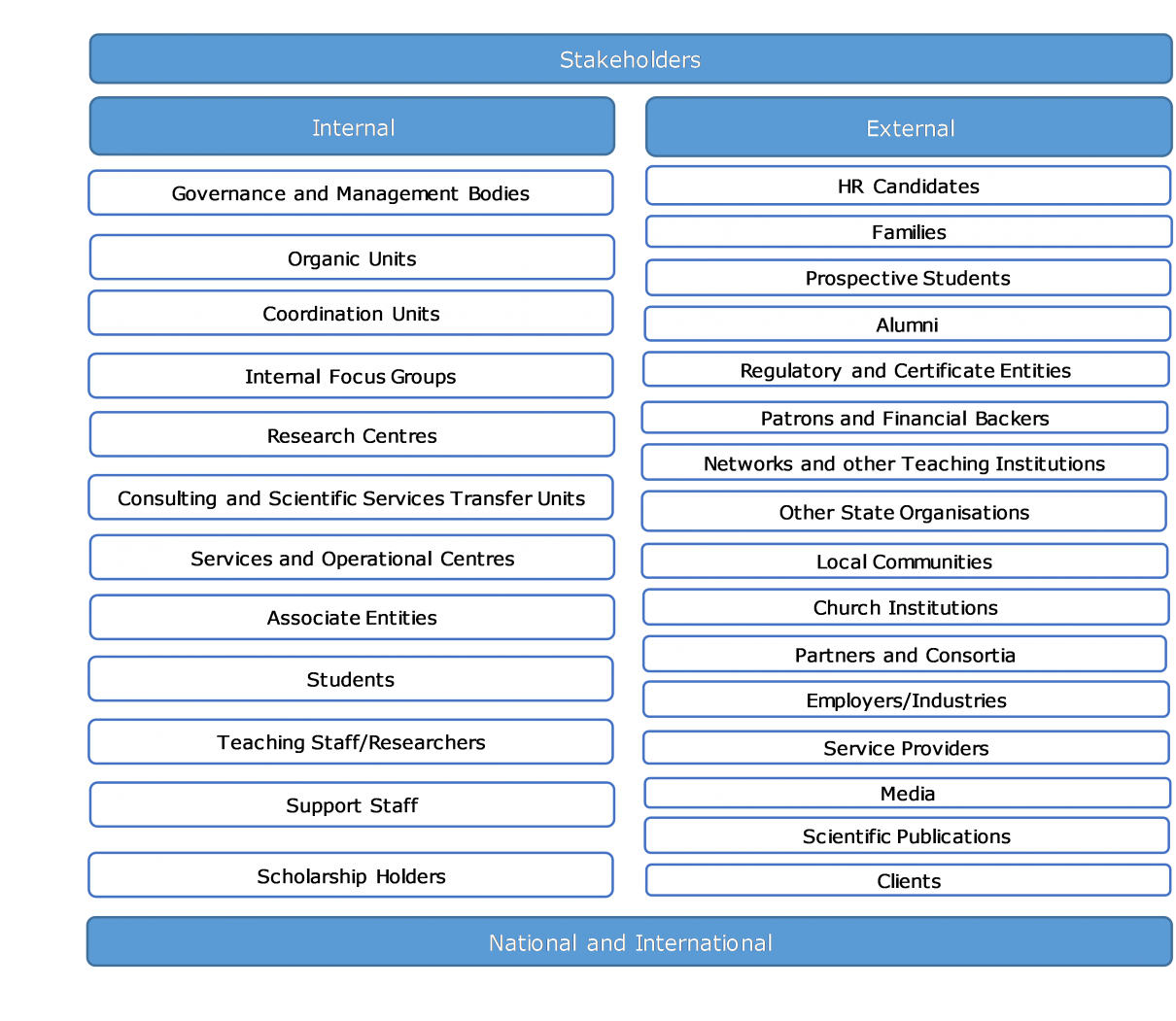How We Manage Quality
PLANNING AND MANAGEMENT
The UCP Strategic Development Plan (UCP’s 2021-2025 Strategic Development Plan) currently in force (approved by the Board of Governors on 3 March 2021), and entitled “Value with Values: Creating the Future in the Present” 2021-2025, resulted from an extended collaborative exercise in which the entire community took part. It was structured into three categories in the Mission axis, three in the Resources axis and three in the Transversal axis.
The UCP Quality Plan (UCP QP) is an interconnected set of 36 Strategic Initiatives (SI), in the different axes, dimensions and areas of the SDP, that streamline and enhance UCP’s improvement and innovation strategies for its activities, in accordance with the SDP for the 2021-2025 period.
The Strategic Initiatives contained in the UCP QP are organized into the three Axes and nine Dimensions of the SDP, which are also listed as QS Macroprocesses.
UCP’s Agenda for Sustainability is a University plan and commitment that aims to strengthen UCP’s Global voice in the guidance towards the common good.
UCP is committed to promoting sustainable development and protecting the “Common Home”. It thus works to make a contribution that is consistent with the 17 Sustainable Development Goals (SDGs) and the UN 2030 Agenda, in light of Pope Francis’ Laudato si’ and Fratelli tutti encyclicals on Integral Ecology and Social Friendship, respectively.
In its Strategic Development Plan UCP considers three types of dimensions in the development of its strategy:
“Mission” dimensions: these integrate the macroprocesses connected to UCP’s Mission of Teaching, Research and University Social Responsibility;
“Resources” dimensions: these integrate the macroprocesses that ensure the development of UCP’s activities, namely People, Economic-Financial, and Infrastructures;
“Transversal” dimensions: these integrate macroprocesses that, due to their strategic nature in the 2021-2025 context, require a particular institutional focus and must cut across all other Mission and Resources processes: Global Targeting, Convergence and Innovation, and Sustainability.
The Macroprocess Approach
The UCP QS is therefore composed of ten macroprocesses: the nine detailed in the SDP, plus the Governance and Improvement Macroprocess. The latter is central to the QS and combines the institutional policies that underlie the quality policy of processes, ensuring the definition of their management and review, as well as of QS audits. It also aims to establish the standards for the planning, monitoring and review of all QS processes in order to ensure proper monitoring of the system and continuous improvement.
Stakeholders
UCP’s Stakeholders are identified in the picture below. These Stakeholders intervene at different organizational and regional levels with varying scope, depth, and levels of impact. The University’s activities are based on Stakeholders’ involvement in the QS, which encompasses mechanisms to assess their needs, expectations, and satisfaction levels. UCP is concerned with improving the ways and frequency of Stakeholders’ involvement in the UCP QS. These, while being diverse, must take into account organizational levels and processes.




